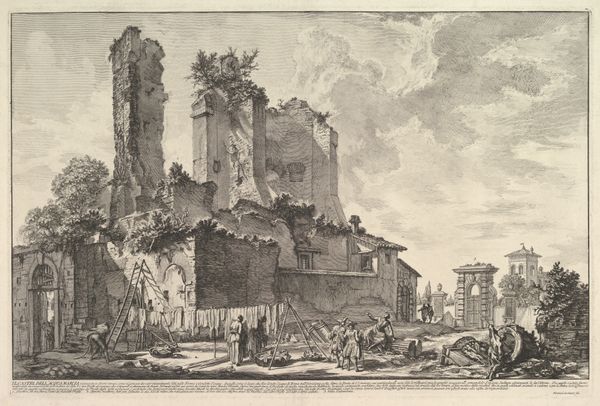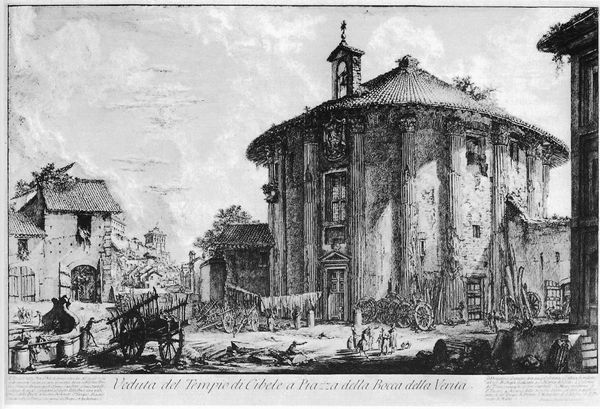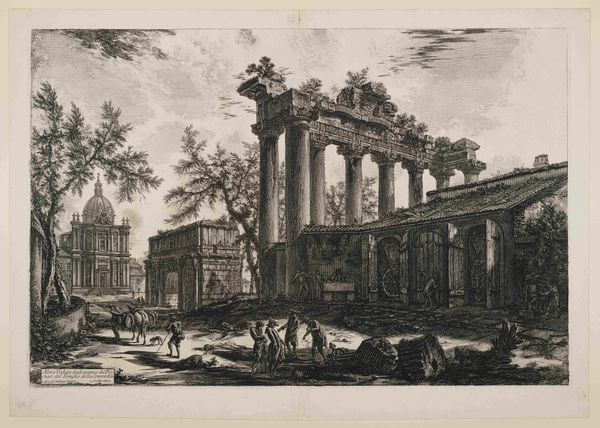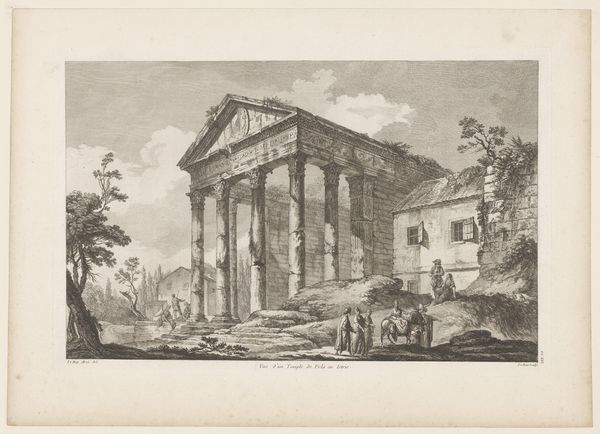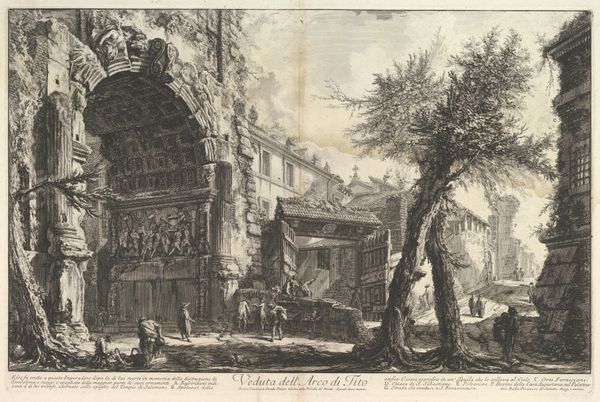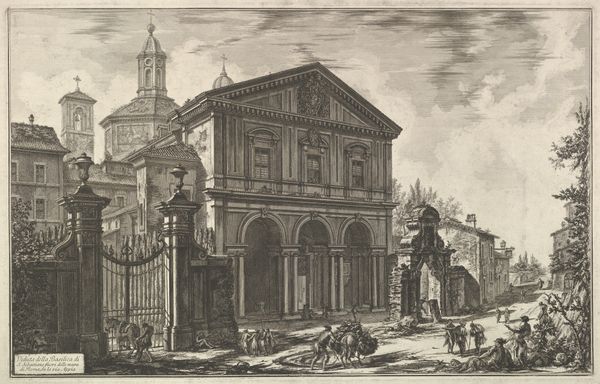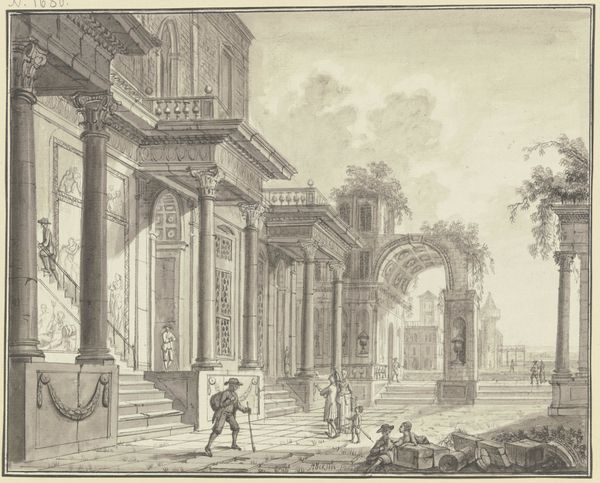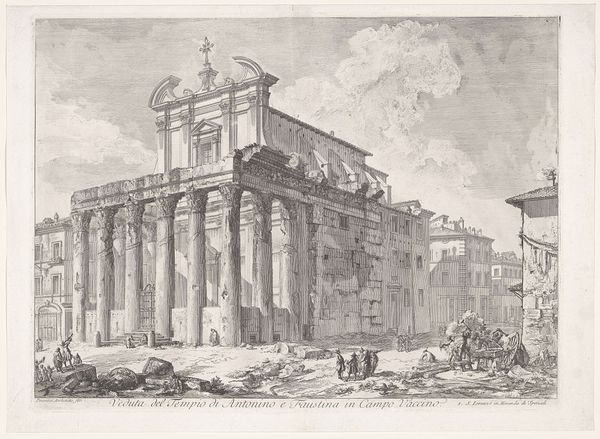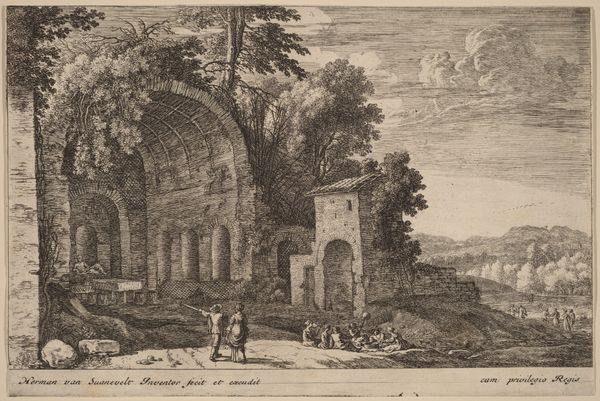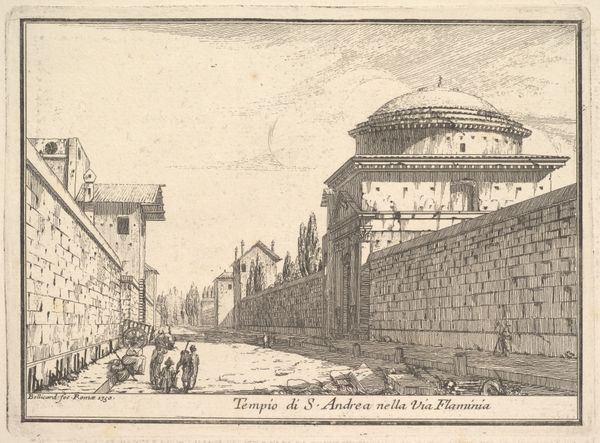
View of the Temple of Cybele in the Piazza of the Bocca della Verità (Veduta del Tempio di Cibele a Piazza della Bocca della Verità) 1753 - 1763
0:00
0:00
drawing, print, etching, engraving
#
drawing
#
neoclacissism
# print
#
etching
#
landscape
#
perspective
#
romanesque
#
cityscape
#
academic-art
#
engraving
Copyright: Public Domain
Curator: This is Giovanni Battista Piranesi's "View of the Temple of Cybele in the Piazza of the Bocca della Verità," made between 1753 and 1763. It's an etching and engraving. Editor: Immediately, what strikes me is this incredible layering, the sheer accumulation of labor evident in all the tiny, cross-hatched lines that give this Roman vista such atmospheric density. It feels almost overwhelming. Curator: That's Piranesi’s hallmark! Notice how he doesn’t just depict the Temple – later understood as the Temple of Portunus– but stages it. The etching breathes Roman history and memory into contemporary, 18th-century life, and vice versa. Observe how people populate the scene carrying their trade tools and wares and engaging with each other as if the Roman temple is simply an intriguing artifact in the cityscape. Editor: Intriguing indeed, but the placement also conveys the ruin's slow encroachment by the daily grind. Look at the work carts, the clothes drying nearby – the sheer stuff of survival placed cheek-by-jowl with these decaying glories. It really highlights how materials, even stone, are eventually overcome by use and the elements. Curator: It’s a layered statement, absolutely. Consider Cybele, the deity connected to this 'temple,' representing the Earth Mother, nature, and fertility – powerful themes in Roman culture and artistic depictions for centuries prior to Piranesi's period. The dilapidation almost mocks these qualities, though some would also say the decay enhances its drama. Editor: Precisely. Look how the print’s sharp contrasts draw out the flaking surfaces of each classical column, but the crisp line work simultaneously mythologizes both past and present, wouldn’t you say? Even laboring in what must’ve been incredibly demanding conditions, the people Piranesi engraved appear…heroic, like tiny versions of Roman statues or some monument in service of their country. Curator: The humanistic quality suggests Piranesi sought a way of rendering timeless virtues amid quotidian activities and concerns, yes. In doing so, he preserves the Roman cultural identity across perceived divides between social class. Editor: And he elevated his own labor, quite frankly, as an etcher and engraver of Neoclassical monuments, reminding us of his place in both the social hierarchy and art historical tradition, one that continues through us. Curator: It is a captivating work, providing avenues for pondering cultural significance and evolution, how things fade and are renewed. Editor: Yes, a fascinating peek into history’s dialogue between materials and the symbolic world they sustain – often quite precariously, as Piranesi makes clear.
Comments
No comments
Be the first to comment and join the conversation on the ultimate creative platform.

